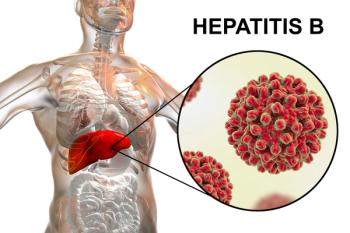
Asymptomatic C difficile carriers have risk factors at time of hospital admission
Screening patients for risk factors upon hospital admission has potential to identify nearly three out of four asymptomatic carriers of Clostridium difficile, according to a new study published in the May issue of the American Journal of Infection Control.
Screening patients for risk factors upon hospital admission has potential to identify nearly three out of four asymptomatic carriers of Clostridium difficile, according to a new
Researchers from the Mayo Clinic in Rochester, Minn., analyzed stool samples from 320 patients showing no symptoms of C difficile at hospital admission using a real-time polymerase chain reaction (PCR) assay. Samples from 31 of 320 patients tested positive for C difficile, resulting in a colonization rate of 9.7%. The authors wanted to estimate the reservoir of colonized patients as a source of potential transmission because despite rigorous infection control measures, C difficile infection was increasing at their institution.
“All patients admitted to adult in-patient units (excluding psychiatry) on 20 pre-selected days in March and April 2009 at our tertiary care hospital were evaluated for eligibility [anticipated length of stay >24 hours, no known or suspected current C difficile infection, diarrhea, or other evidence of colitis, and ability of the patient or their representative to provide consent],” said lead study author Surbhi Leekha, MBBS, MPH, assistant professor for the departments of epidemiology, public health, and medicine, at the University of Maryland School of Medicine, Baltimore.
Eligible patients (or their representatives) were approached for participation in the study within 24 hours of admission. Those who provided consent were asked to submit stool samples that were tested for presence of toxigenic C difficile using PCR. Risk factors for asymptomatic colonization were assessed using patient interview and review of medical records.
“Among those study participants who were able to provide stool for testing shortly after hospital admission to a tertiary care hospital, nearly 1 in 10 were found to be asymptomatically colonized with C difficile,” said Leekha. “The colonization proportion detected by stool PCR in our study was very similar to that observed in older studies in similar patient populations performed in the 1980s to 1990s, where C difficile colonization was detected using cultures of stool or rectal swabs. Recent hospitalization, chronic kidney disease requiring dialysis, and use of corticosteroids were found to be risk factors for colonization in the present study.
The data from this study alone are not sufficient to warrant any change in practice, however, according to Leekha. “This is a small single-center study, further limited by the fact that we could collect stool samples from only 22% of patients admitted to the hospital during the study period,” she said. “The study findings suggest that asymptomatically colonized patients could be a potential reservoir for C difficile in the hospital, similar to what is known for other bacteria such as MRSA.”
Future studies might address the extent to which such asymptomatic carriers contribute to new cases of C difficile infection, and whether screening for asymptomatic colonization, and implementation of infection prevention measures in C difficile carriers could be an effective strategy to limit the transmission of this organism, Dr. Leekha said.
“The rates of hospital-acquired C. difficile infection had been steadily increasing at our institution between 2004 and 2008,” she said. “This was occurring in conjunction with increases in the incidence of C difficile infection throughout the United States. Further, the increase continued despite the use of measures such as private rooms and presumptive contact precautions initiated for suspected cases, and continued for the duration of hospital stay for confirmed cases of C difficile. For this reason, we initiated an investigation of the reservoir of patients asymptomatically colonized with C difficile as a potential source of this pathogen. Specifically we wanted to know if the proportion of asymptomatically colonized patients was higher now than that observed in tertiary care hospitals in older studies.”
In conclusion, Leekha said that asymptomatic C. difficile colonization was commonly detected in hospitalized patients at a tertiary care center at the time of admission, but the prevalence did not appear to have increased from that reported in older studies in tertiary care hospitals in the 1980s to 1990s.
Newsletter
Pharmacy practice is always changing. Stay ahead of the curve with the Drug Topics newsletter and get the latest drug information, industry trends, and patient care tips.











































































































































































































